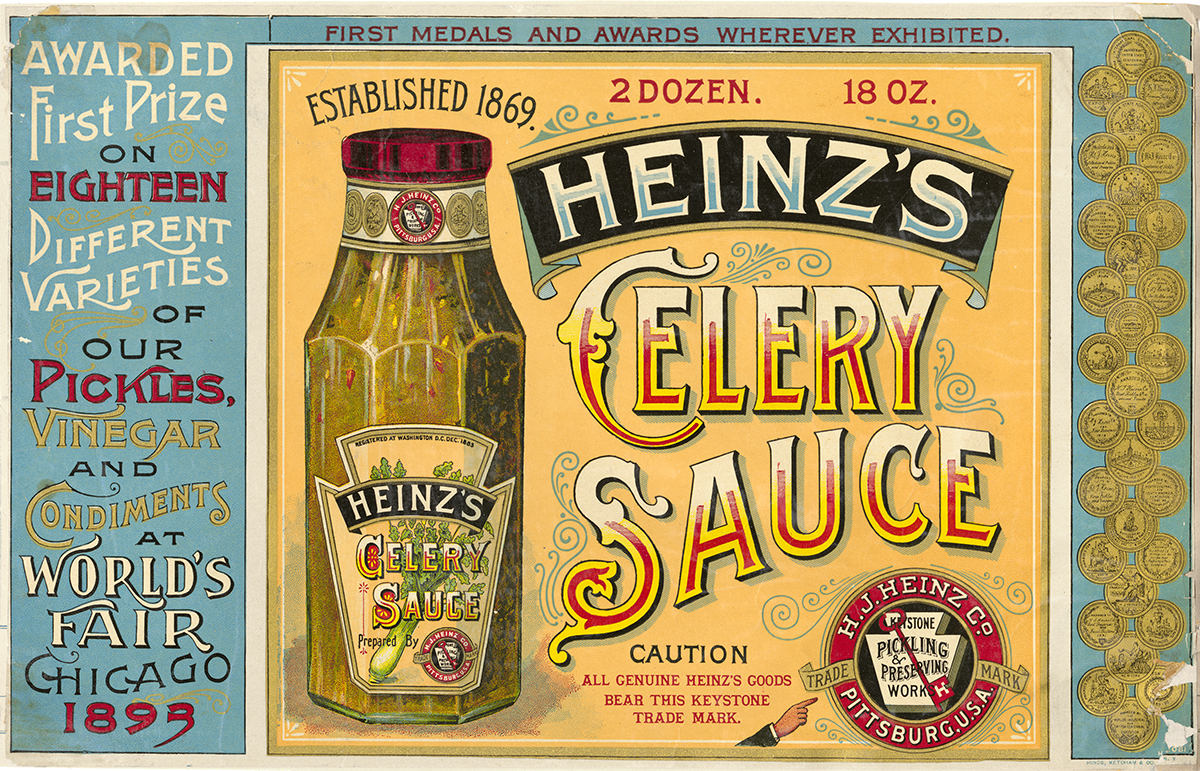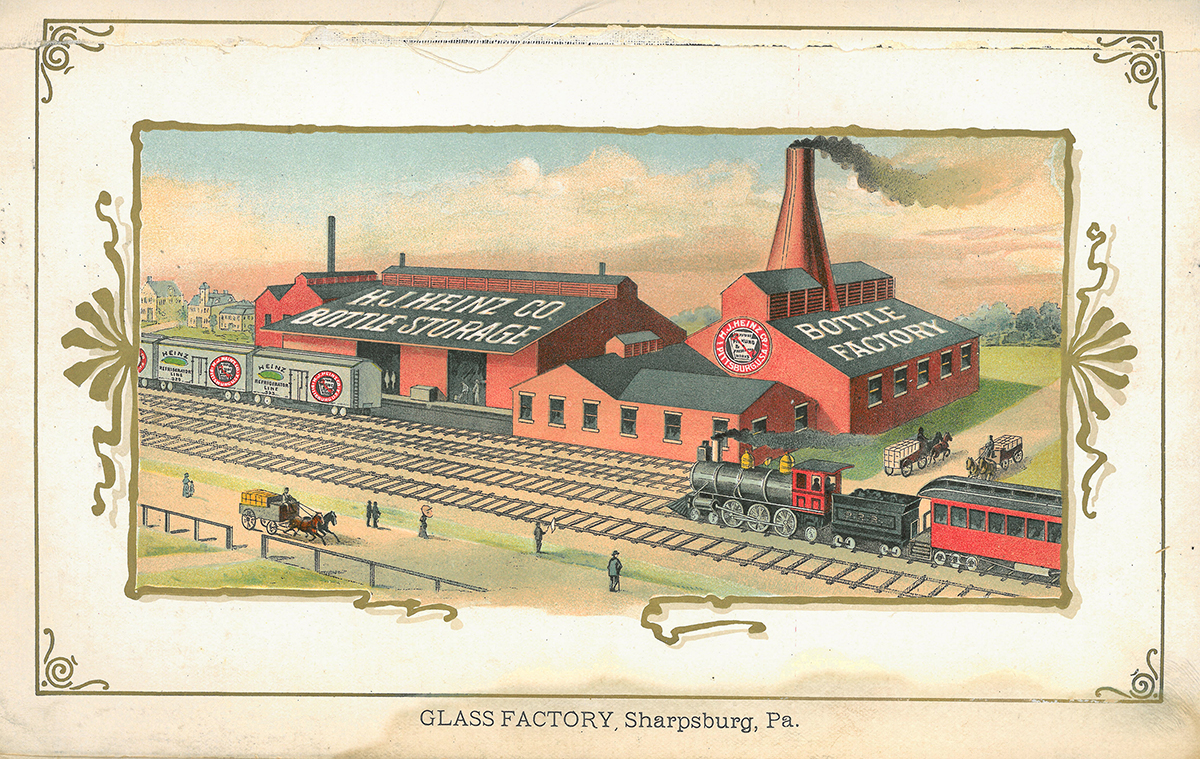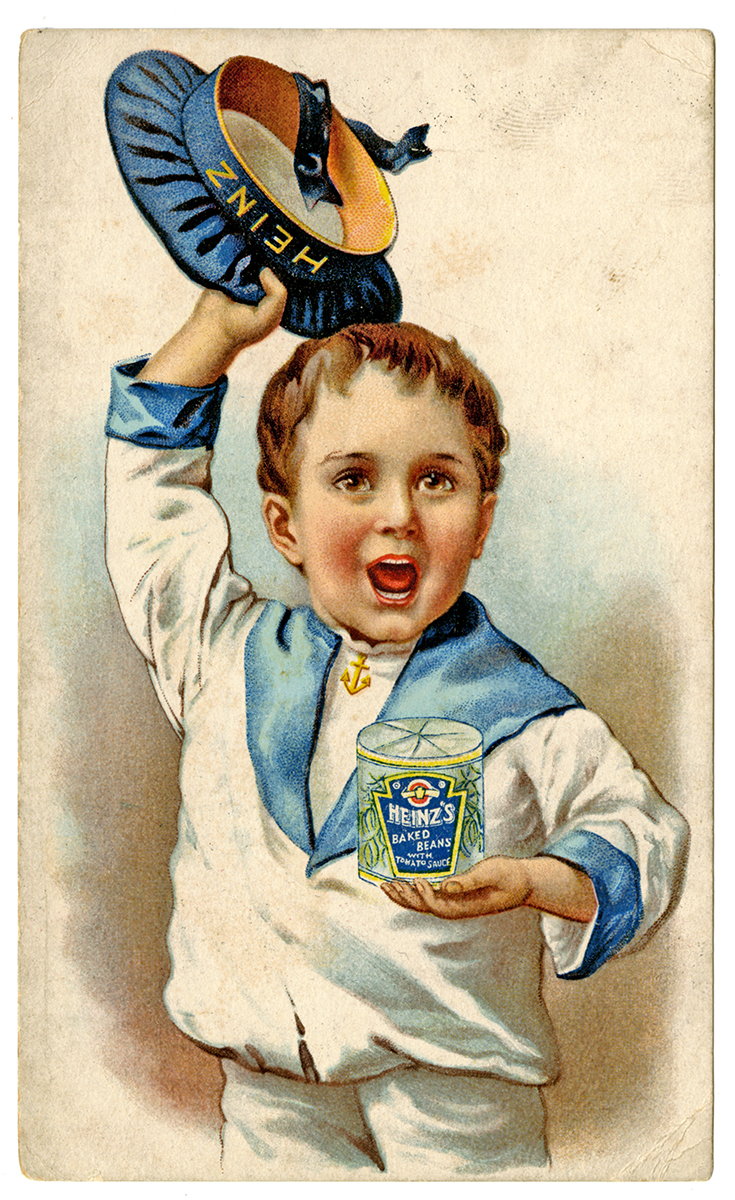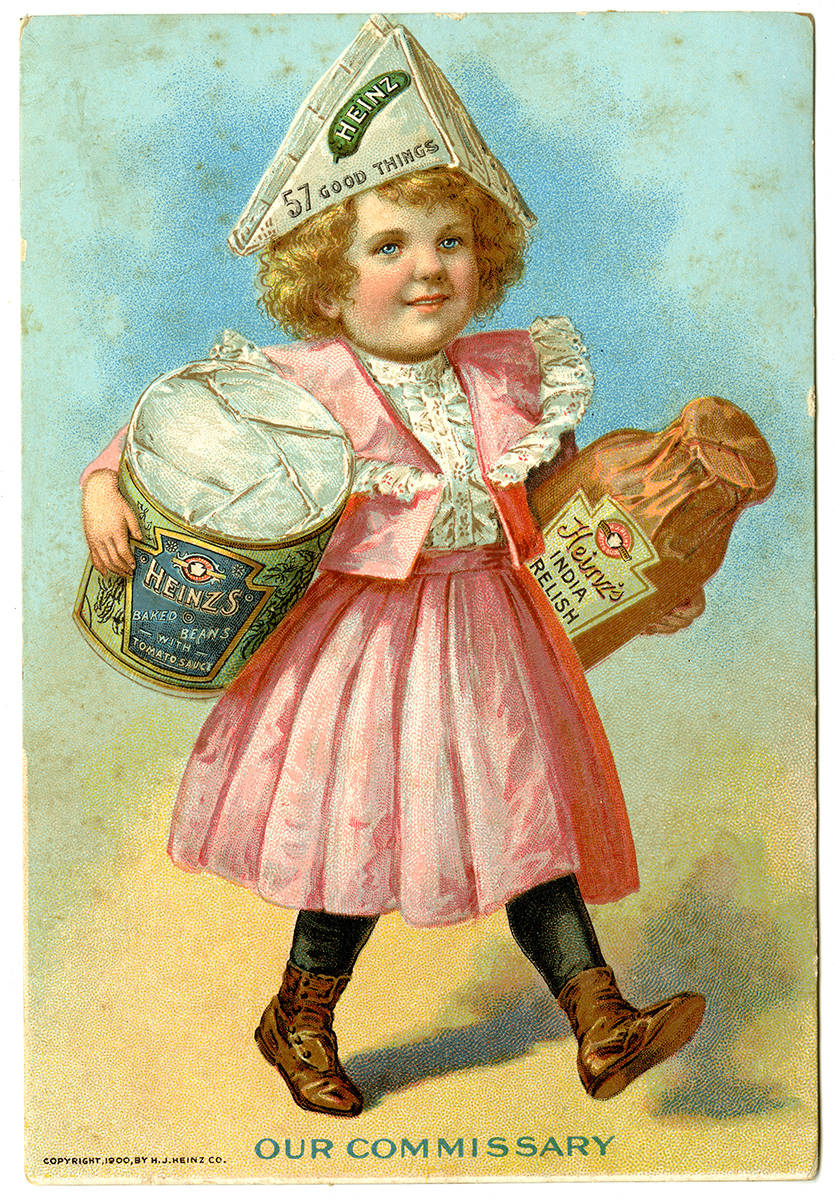The following post is an excerpt from the new book, 57 Servings From the Heinz Table, by History Center curator Emily Ruby. You can purchase the book from our museum shop or online.
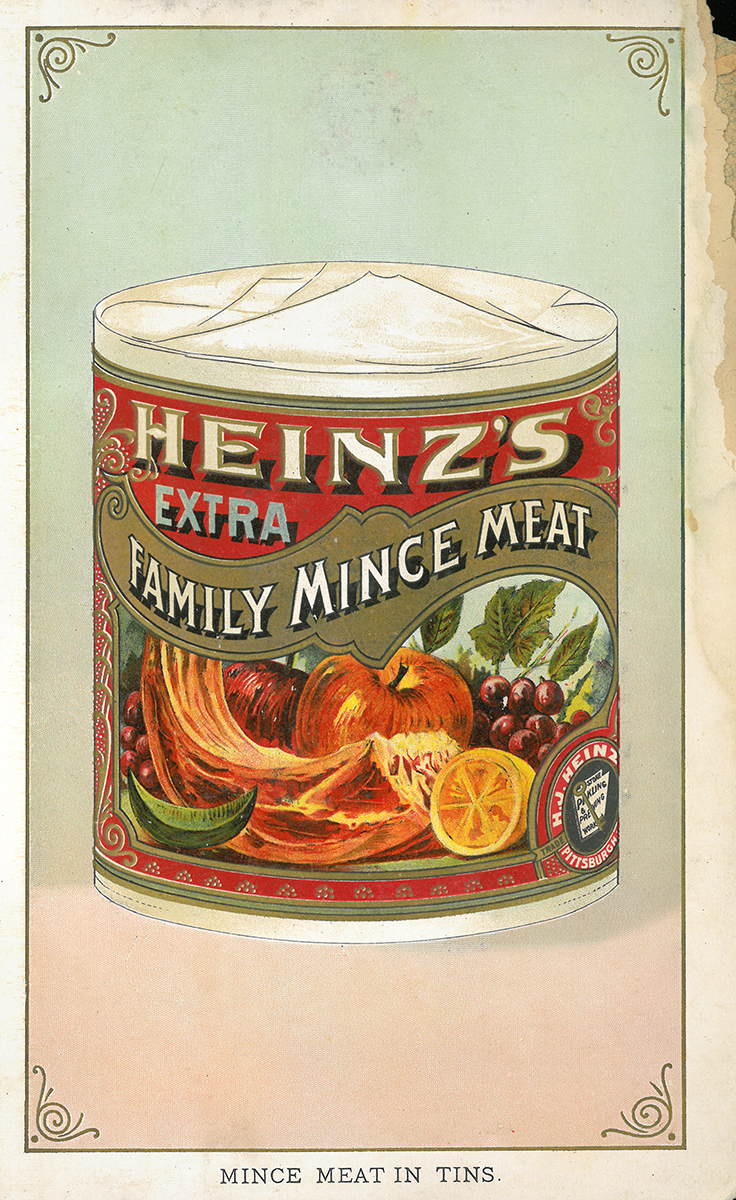
Bottles and Product Labels
H.J. Heinz cared about what he put inside the bottle, but he also realized that the package made the first, and often most important, impression. He carefully crafted the bottles and containers for his products, even patenting some, and put great thought into the label design. His labeling emphasized the fresh, natural ingredients inside, especially on containers whose contents could not be seen. For customers who could not read, these illustrative labels indicated the type of product inside. By making Heinz products stand out on the grocery shelf, the company created a memorable brand image for future purchases, especially as packaged foods (and competitors) expanded in the 20th century.
Advertising Cards
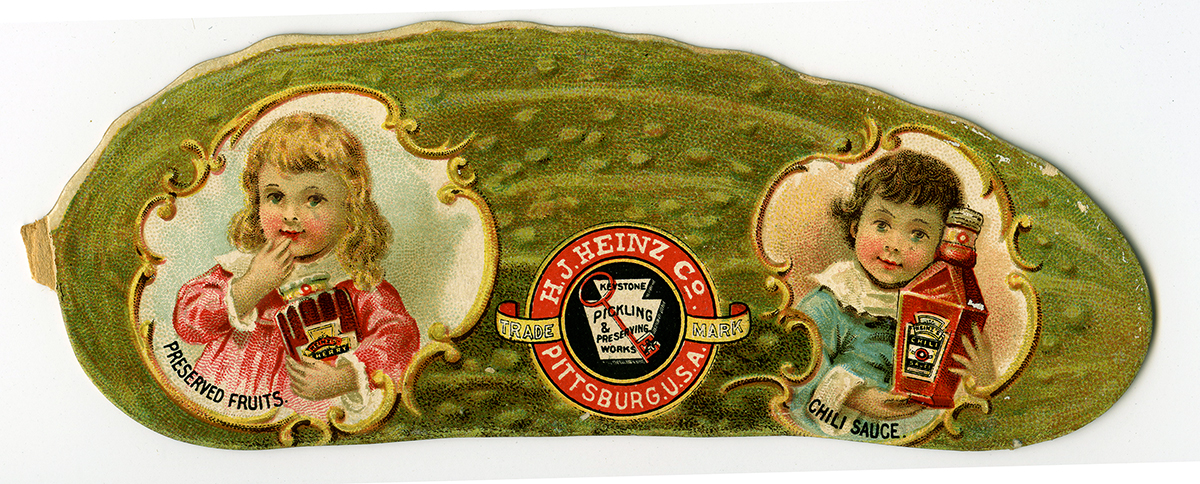
By the late 1800s, with advances in color lithography, many businesses produced brightly colored and illustrative trade cards. The craze in collecting peaked in the 1890s and then dissipated by the turn of the century when other forms of advertising, like magazines, increased. Not one to bypass any opportunity at marketing, H.J. Heinz also distributed trade cards to promote his products. The front side boasted brightly colored illustrations, often of adorable, healthy children to convey the idea that Heinz foods promoted health and well-being.
Emily Ruby is a curator at the Heinz History Center, where she oversaw research and interpretation for the new Heinz exhibit. She is the author of the new book, 57 Servings From the Heinz Table, available now.
